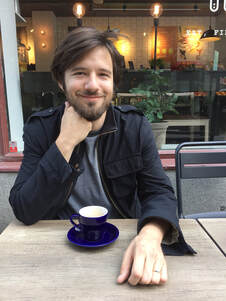| Human beings are now collecting data at an astounding rate in almost every process that we are involved in, from astronomy to social media to medicine. But what do we do with all this data? How do we draw meaningful conclusions from it? How can we find structure within it? How can we even use the data for computations when we can’t access it all at once? My research is in the mathematical foundations of analyzing large-scale, high-dimensional data. Dimensionality of data can be described as the number of parameters used to describe it. For instance, an image from our phones has over 10 million pixels, each of which has a red, green, and blue color value. Such an image can then be thought of as having 30 million parameters to describe it. But if we just chose random values for colors at each pixel we would not end up with a meaningful picture to the human eye. Thus, we might expect that real photos can be described by many fewer parameters. I am interested in the complementary tasks of designing methods which find low-dimensional structure within high-dimensional data, and designing methods which can reduce the dimensionality or complexity of data in a way that is interpretable and faithful to what is there. I have applied such methods to tasks in Computer Vision, like segmenting motions of objects moving in videos and in facial recognition from images. I have also worked with a Postdoc in Medical Imaging on a method to find the smallest number of parameters that governs, say, MRI images. Here at the University of Arizona I am fortunate to be among a tremendous group of interdisciplinary faculty and have had many fruitful collaborations with members of the Data Science Institute as well as Mathematicians, Statisticians, and Computer Scientists in the TRIPODS program. TRIPODS stands for Transdisciplinary Research in Principles of Data Science, and is an NSF-funded initiative designed to bring together researchers from these three fields to work on foundational problems that arise in analyzing data. Sharing common interests but a diverse perspective has brought a lot of great work from the program, and will continue to advance scientific understanding of data analysis moving forward. |
|
0 Comments
Leave a Reply. |
SpotlightEach month we'll feature a Postdoctoral Scholar and their research, sharing their experiences from the UA, life in Arizona and their research interests. Archives
November 2022
Categories |

 RSS Feed
RSS Feed
